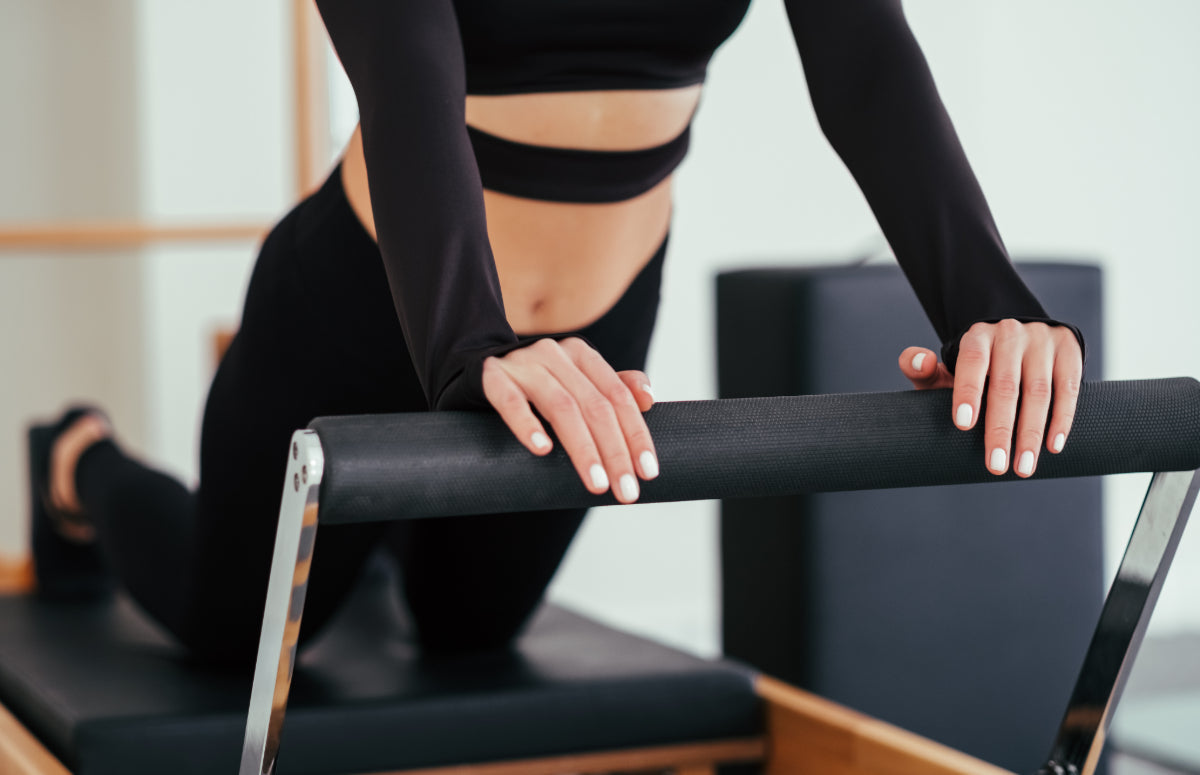Article: Pilates Terms Decoded: A Beginner's Guide to Understanding the Lingo

Pilates Terms Decoded: A Beginner's Guide to Understanding the Lingo
Walking into your first Pilates class can feel like stepping into a foreign country where everyone speaks a different language. Between "neutral spine," "powerhouse," and "the hundred," it's easy to feel lost in translation. But don't worry—we've all been there, and this guide will help you decode the essential Pilates vocabulary so you can focus on what matters: the practice itself.

The Pilates Foundation: Core Concepts
The Powerhouse
This might be the most important term to understand in Pilates. The "powerhouse" refers to the center of your body—the abdominals, lower back, hips, and glutes. Joseph Pilates (the method's founder) believed that all movement should flow from this central area. When an instructor tells you to "engage your powerhouse," they're asking you to activate and tighten these core muscles.
Neutral Spine
You'll hear this in almost every class. A neutral spine is the natural position of your spine when all three curves (cervical, thoracic, and lumbar) are present and properly aligned. In this position, your pelvis is level, with your pubic bone and hip bones forming a straight line parallel to the mat. This alignment is crucial for protecting your back during exercises.
The Pilates Stance
This refers to the position of your feet in standing exercises—heels together, toes slightly apart (like a small "V"). It creates a stable base that engages your inner thighs and promotes proper alignment through your legs.

Common Exercise Names
The Hundred
Named for the 100 beats of your arms during the exercise, this warming move involves lying on your back, lifting your head and shoulders, extending your legs, and pumping your arms up and down while breathing in for 5 counts and out for 5 counts. It's designed to build heat in the body and stimulate circulation.
Roll Up/Roll Down
These describe the action of rolling your spine up from or down to the mat, one vertebra at a time. Think of it as "peeling" your spine off the mat (roll up) or "placing" it down sequentially (roll down). This movement promotes spinal articulation and core control.
The Teaser
One of the more challenging exercises, the Teaser involves balancing on your sit bones with your legs extended and your upper body in a V-shape. It requires serious core strength and control!
Swan Dive
A back-strengthening exercise where you lift your chest off the mat while lying on your stomach, similar to Cobra pose in yoga. The "dive" part refers to the rocking motion that sometimes follows.

Breathing and Movement Terminology
Pilates Breathing
Unlike yoga's belly breathing, Pilates emphasizes lateral thoracic breathing—expanding your ribs to the sides while keeping your abdominals engaged. You'll often hear "breathe wide into your ribcage" as an instruction.
Articulation
This refers to the sequential movement of your spine, one vertebra at a time. Good articulation means you're moving with control and awareness rather than treating your spine as one rigid unit.
Scoop
When an instructor tells you to "scoop your abs," they're asking you to draw your navel toward your spine and slightly up toward your ribs, creating a hollow feeling in your lower abdomen. This engagement protects your lower back and activates your deep core muscles.
Opposition
This concept refers to the energy extending in opposite directions from your center. For example, in leg stretches, you're reaching through your heel while simultaneously grounding through your powerhouse—creating opposition that lengthens your body.
Equipment Terms
Reformer
A sliding platform with springs, straps, and bars that create resistance and assistance for various exercises. Don't worry if you've only taken mat classes—reformer work is typically introduced after you have some Pilates experience.
Cadillac (Trapeze Table)
This intimidating-looking apparatus resembles a four-poster bed with various attachments. It allows for an extensive range of exercises, from beginner to advanced.
Magic Circle (Ring)
This flexible ring, about 13 inches in diameter, provides gentle resistance for many exercises and helps with precision and alignment. It's particularly good for inner thigh work.

Tips for Your First Class
-
Listen for cues about breathing—inhales often prepare for movement, while exhales accompany the effort.
-
Focus on quality over quantity—Pilates is about precise, controlled movements rather than repetitions.
-
Remember that "engaging your core" means more than just sucking in your stomach—it's about creating stability throughout your center.
-
Don't hesitate to ask questions—good instructors want you to understand the terminology so you can get the most from your practice.
-
Be patient with yourself—the mind-body connection Pilates develops takes time to build.
The Bottom Line
Pilates has a unique vocabulary that reflects its focus on precise movement, core strength, and full-body awareness. While it might seem overwhelming at first, understanding these key terms will help you follow along in class and deepen your practice. The language of Pilates is designed to help you connect with your body in new ways, building strength, flexibility, and mindfulness with every movement.
Remember, even the most advanced Pilates practitioners were beginners once. Embrace the learning process, and before long, you'll be speaking Pilates fluently!






